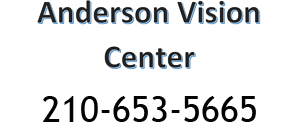Protective Eyewear

Protective Eyewear
Eye Protection is No Accident
Whether you’re working on a project at home or at work, eye protection is serious business. According to the National Institute for Occupational Safety and Health (NIOSH), about 2,000 U.S. workers sustain job-related eye injuries requiring medical treatment each day. Of these injuries, 90% could have been prevented with the right eye protection. Luckily, specialized eyewear is available from [INSERT PRACTICE OR DOCTOR’S NAME] to provide eye protection and visual enhancement for recreational, industrial, and occupational situations.
The two most common reasons for eye injuries in the workplace are when a worker is wearing the wrong type of protective eyewear for the task, or when they are not wearing any protection at all.
The most common occupations for eye injuries include:
- Auto repair
- Carpentry
- Construction
- Electrical work
- Maintenance
- Manufacturing
- Mining
- Plumbing
- Welding
A Bureau of Labor Statistics survey questioned people who experienced an eye injury in the workplace. The responses revealed that nearly three out of five workers were not wearing eye protection at the time of an accident. These same workers reported they didn’t feel safety eyewear was needed for the job they were doing.
Hazards exist in every home in many different forms such as sharp edges, falling objects, chemicals, noise, and a variety of other potentially dangerous situations. Whether you’re working on a weekend project in the garage or participating in recreational activities, wearing eye protection can significantly reduce the chances of sight damaging injuries.
[INSERT PRACTICE OR DOCTOR’S NAME]’s Tips for Protecting Your Eyes
- Plan ahead. Know the eye safety dangers associated with job or project you’ll be working on. Will there be projectiles, chemical exposure, or light radiation?
- Eliminate hazards. Reduce your risk of eye injury by eliminating hazards before you begin the job. Use safety guards, work screens, and other preventive measures whenever possible.
- Wear protective eyewear. Don’t risk something as important as your sight. Whether it’s goggles, a face shield, a helmet, or prescription/non-prescription eyewear with impact resistant lenses, always wear the proper form of protective eyewear for the job.
- Maintain your eyewear. If your protective eyewear becomes scratched or broken, be sure to replace it right away. If you cannot see through it clearly, or if it’s broken in any way, it will not protect you like it was designed to do.
[INSERT PRACTICE OR DOCTOR’S NAME] can help you select the protective eyewear most appropriate for your job or activity based on a hazard assessment. Please call our office for more information.
